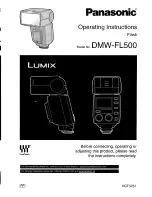
V1.02
Thom Hogan’s Complete Guide to the Nikon D300
Page 451
Shots Taken
Why Use It
Frame rate is set to
single frame, self
timer, or mirror-up
One with each
shutter release
press (or combined
release for mirror-
up)
To combine
multiple, disparate
elements into one
shot
Frame rate is set to
Continuous Low or
High
With a single press
of the shutter
release
To track motion
through a shot, or
to make moving
objects get soft
edges
Camera set to use
Interval timer
At the selected
intervals selected
To track motion or
an event over time,
using an exact
time sequence
A bunch of caveats apply, but they all amount to pretty much
the same thing: long lapses of time or specific actions on your
part will cancel the multiple exposure setting. Specifically, the
option is canceled if you do nothing for 30 seconds, turn the
camera off, exhaust or replace the battery, or cancel the
multiple exposure operation specifically.
Remote Control
The D300 supports the 10-pin connection for remote releases
(see “D300 Accessories” on page <754>), plus it can be
controlled directly from a computer using Nikon Camera
Control Pro 2.0 (see the
Introduction to Nikon Software
eBook
that accompanied this one).
Connecting to a GPS
The D300 can be connected to most GPS devices. When you
do this, you’ll have Coordinated Universal Time (UTC),
longitude, latitude, and altitude data added to the EXIF
information for every picture you take while the camera and
















































